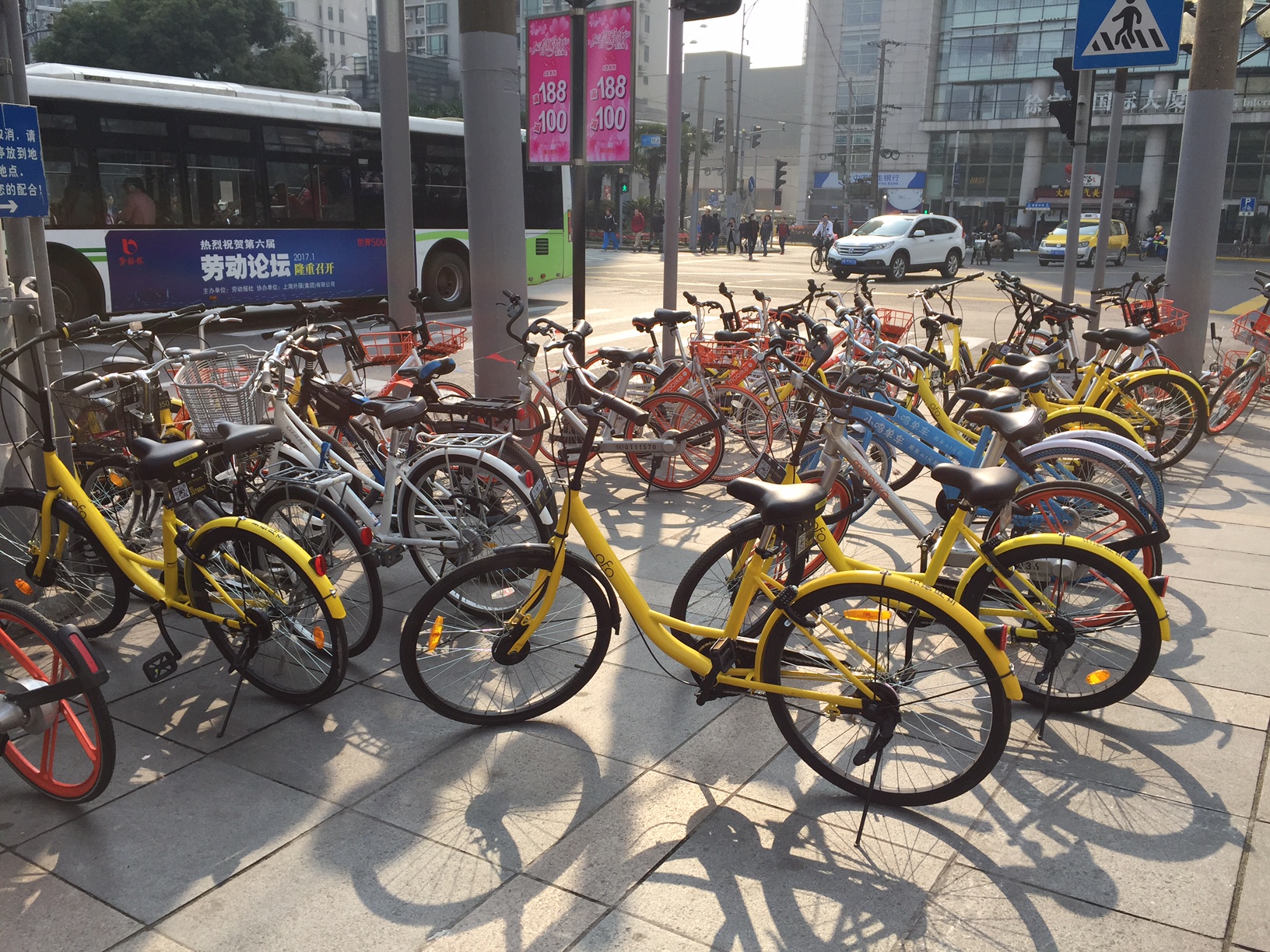It is now 2018 and one of my key New Year Resolutions is to get on top of my Blog and be more consistent in writing and sharing topics with you, that I hope you will find at least mildly interesting.
Case in point is this article which I started to write early in 2017 but with a lot of projects on the boil, I just didn’t seem to find time to get this done but at last here it is and while it is a bit dated, the basic premise is the same.
China never ceases to amaze me!
My former boss at Sensient Technologies, Ralph Pickles, always used to say to me that “A good idea doesn’t care who thought of it” but the Chinese certainly know how to take a good idea and completely change the model to meet the needs of the Chinese consumers.
Old rusty and creaky bicycles were the norm in China and when I was in Shanghai in Dec 2016 this was certainly the case and no one would ever contemplate stealing one of these clunkers. Colors ranged from rust to black and these were everywhere but seldom ridden and usually leaning against a wall or in a “pick up sticks” like pile on the foot path. Of course, there were the brightly colored carbon fiber racing bikes used by the international expats, but that was it.
Fast forward another 4 months and I was back in Shanghai in March 2017 to attend the Food Ingredients China (FIC) exhibition. As is my want, I always stay in the French Concession area and as I walked around near Dong Ping Lu and Heng Shan Lu, I couldn’t help but notice these small brightly colored bikes were everywhere either parked on the foot path or being ridden around by mostly younger people. There were hundreds if not thousands, in yellow, orange, green and red as well as 2 tone colors and surprisingly, the clunkers had all but disappeared.
What was going on?
Well it didn’t take me long to work out that this was “bike sharing” Chinese style. Now my view of bike sharing revolved around the rather sturdy bikes that are held in purpose built racks that consumers can ride once you use your credit card to pay and the bike is released for you to use. You see them everywhere – Chicago, Pittsburgh, London, Melbourne and even in Cincinnati. The key thing is that the bikes are wedded to the racks and so pick up and drop off, must be at the racks for this system to work. The sharing service is usually provided by the local city and while there is growing interest the number of bikes available will always be limited because of the rack capacity.
In China however, there are no racks and the bikes are everywhere so no restriction in capacity. They all have GPS locators inside the bike and a QR reader which allows users to scan the QR code and obtain a password to unlock the security device and away you go. Cost is only 1 Yuan per hour or US$0.15c. To open an account, you need to deposit Y200 or about $30 and there are millions of registered users which of course is a great way to fund the whole thing.
More than 30 bike-sharing apps have sprouted up since 2016. The larger ones such as MOBIKE (Orange) and OFO (Yellow) battle it out for supremacy with subsidies and promotions that have attracted millions of Chinese to go back to using a bike. The biggest are valued in excess of US$1 billion each. Of course, this is not so much about the bikes, which by the way are very cheap. Venture Capital and Private Equity have been investing billions in bike sharing apps and many of these companies operate on razor thin margins and at times chalking up losses in their bid for market share. App-enabled services such as food delivery to ride hailing see the fiercest subsidies because the smartphone sits at the nexus of online and offline business and it seems if you want to better reach Chinese consumers, then you need to take control of mobile devices.
These bikes are everywhere, and already they seem to be creating a bit of a problem by crowding out footpaths and high demand areas where people want to go, and some cities are starting to introduce regulations – Beijing have banned parking bikes in key tourist areas such as Tiananmen Square. I can imagine whole fleets of flat bed trucks driving around Shanghai or Beijing at night moving bikes from low demand to high demand areas to balance the system.
As I mentioned this was early in 2017 and I was in Melbourne later in the year and I started to see similar multi colored bikes on the streets and footpaths so once again it seems that “A good idea doesn’t care who thought of it”
Hope you have a Happy and a Prosperous New Year.

China business leapfrogs again!
—
by